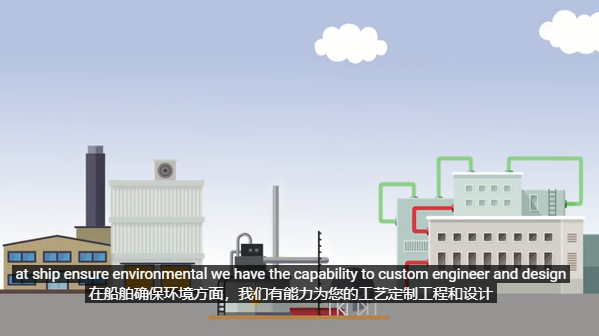
Ship & Shore Environmental (S&SE), dedicated to handling and advising on the full spectrum of environmental needs since 2000, today announced entry into the solar energy market by providing pollution abatement solutions to solar panel manufacturers.
Solar technology is regarded as one of the most promising solutions to empower the world with clean energy and achieve net-zero goals. However, the production of solar panels, which are the core component of solar generation systems, can be a resource-intensive and hazardous process—which is often overlooked by both industry participants and end users. Some of the potentially hazardous chemicals used in solar panel manufacturing, if not handled properly, can include cadmium and lead, as well as many volatile organic compounds (VOCs), posing threats to the environment and human health.
Though recycling can play a positive role in mitigating waste and environmental impacts, the cost of recycling has remained the foremost hurdle in the process. A study shows that as the cost of solar panels continues to be brought down, system owners would prefer replacing their panels well before their expected 20-30-year lifecycle; additionally, recycling a panel can cost 10x to 30x more than sending it to a landfill.
More advanced and cost-saving panel recycling technologies are still being developed. In the meanwhile, "regulations around waste have not caught up to demand and volume in solar panel manufacturing," said Anoosheh Oskouian, CEO of Ship & Shore Environmental.
However, minimizing environmental impacts associated with panel manufacturing processes has been recognized as a practical and efficient measure at present.
"There are so many environmental and financial incentives for companies to develop and implement cost-effective pollution abatement solutions in their manufacturing. Cleaner production now will also help make future solar panel recycling safer and more affordable," said Oskouian.
The Inflation Reduction Act contains several financial incentives, including the extension of tax credits for solar generation facilities and the creation of new tax credits for electricity-generating facilities that are considered to have a sub-zero annual greenhouse gas emission rate.
S&SE offers services around pollution abatement, including consultation, customized design, fabrication, and on-site deployment of new and retrofit equipment. For the solar industry, the company's regenerative thermal oxidizers (RTOs) are designed to capture and/or treatment of the various chemicals and volatile organic compounds (VOCs) inherent to solar panel manufacturing.
By combing pollution abatement technology, manufacturers "can deliver the panels needed for this clean energy in a way that is healthier, more forward-looking, and more likely to qualify for federal incentives," commented Oskouian.